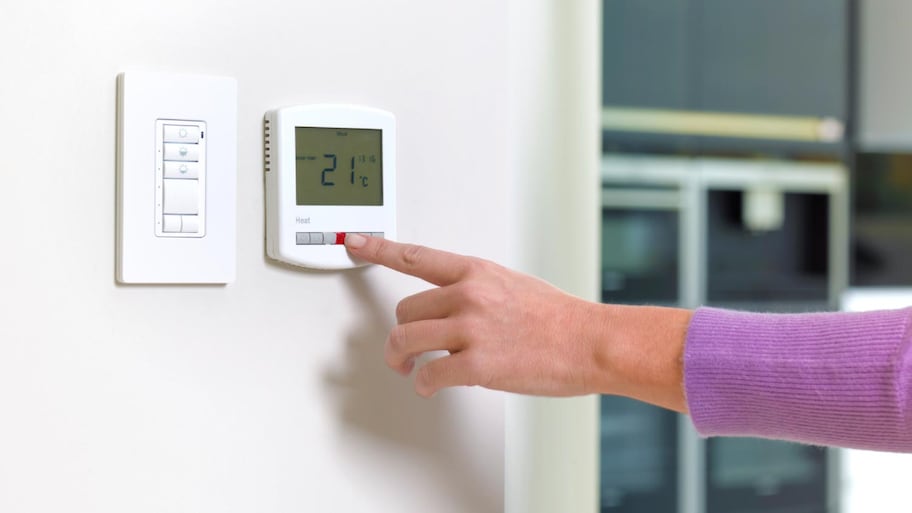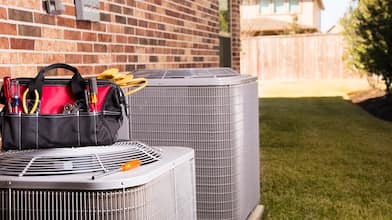Highlights
Common issues include leaks, blockages, and lack of heating.
Valve replacement costs $150 to $300.
Smaller home radiator repairs may not require professional help.
Radiator replacement costs $250 to $2,500.
Darker nights and cooler temperatures mean that winter is afoot, and that’s when we tend to use our heating systems the most. But, after being dormant for some time, your radiators may not cooperate the way you need them. The thought of repair bills may ignite some frustration, but repairing common home radiator problems is a lot easier than you think.
1. Issues With Your Central Heating System
One of the first things you should do is check if there are any more significant issues with your central heating. To gauge its functionality, check each radiator in your home to see if they’re heating up correctly.
If multiple radiators aren’t working, you’ll need the help of a local HVAC contractor to assess the issue. However, if it’s one radiator, it could be something minor.
2. Hot and Cold Patches on Your Radiator
Have you noticed that your radiator might be cold to touch on top, but there’s heat coming from the bottom? If so, it’s because of trapped air. Instead of hot water circulating throughout the radiator, the air takes its place, leading to this slight malfunction.
Luckily, all you need to do is “bleed” the radiator. Don’t worry; you won’t be making any cuts and causing an injury. The process involves releasing the trapped air to get your heating working correctly again.
Locate the bleed valve at the side of your radiator (it's a round hole with a square inside) and use the radiator bleed key to open it slightly. If you don’t have a bleed key, you can use a flathead screwdriver to substitute. The radiator will make a “hissing” noise as the air escapes.
You’ll also want to check the other radiators in your home to see if they need bleeding. Afterward, you can restart your heating system and hop in your comfortable pajamas.
3. Malfunctioning Thermostat

When trapped air isn’t the problem, a cold radiator could involve the thermostatic radiator valve. For a quick troubleshoot, check that someone didn’t accidentally switch the setting to the off position. But if the radiator is on, has a set temperature, and is still cold, the valve has seized up.
To set it free, open the top of the valve by unscrewing it with your hand. Then look for an exposed pin, which you can typically move up and down. If it’s stuck, try tapping it gently to enable movement. It should do the trick, but if that doesn’t work, you may need to replace the valve entirely, costing $150 to $300.
4. A Leaky Radiator
Many leaky radiator fixes precede a hefty repair bill. After all, the cost of a new radiator is $250 to $2,500 plus installation costs, which can range from $50 to $100 per hour.
However, not all radiator leaks are severe. If the leak happens where the thermostatic valve connects to one of the pipes, it could be a loose nut. Simply tighten it with a monkey wrench, and you should be good to go.
5. Blockages In the System
As mentioned above, radiators can be cold on top but hot on the bottom? Well, there are also rare occasions when your radiator can be hot on top and cold on the bottom. This usually indicates sludge build-up at the bottom of the radiator, which limits water circulation throughout the radiator.
The best fix for this is hiring a professional to perform power flushing. It’s a service that uses chemicals to remove any blockages from the bottom of your radiator and help the heat efficiently circulate throughout your home.
Other signs you may need to power flush your radiators include:
Inconsistent temperatures from room to room
A recurring need to bleed your radiators
No hot water
Longer wait times for the central heating to warm
6. Radiator Isn’t Heating Properly

Warm radiators, on the other hand, could foreshadow heating issues if your unit is warm, but the home temperature says the same. Be careful when touching a heated radiator because it could cause a burn. If the radiator feels warm but not hot, you’ll need to balance your heating system. Doing so will increase your system’s performance, keeping you extra warm during those cold winter nights.
When To Call in a Pro
You should feel comfortable diagnosing a few of the most common home radiator problems, but if your troubleshooting comes up empty, call a top-rated heating and cooling contractor for help.
Most service calls range from $50 to $100 per hour.
More often than not, radiator issues stem from the boiler, not the radiator itself. Your pro can diagnose the issue, quote repair costs, and suggest the best course of action.





